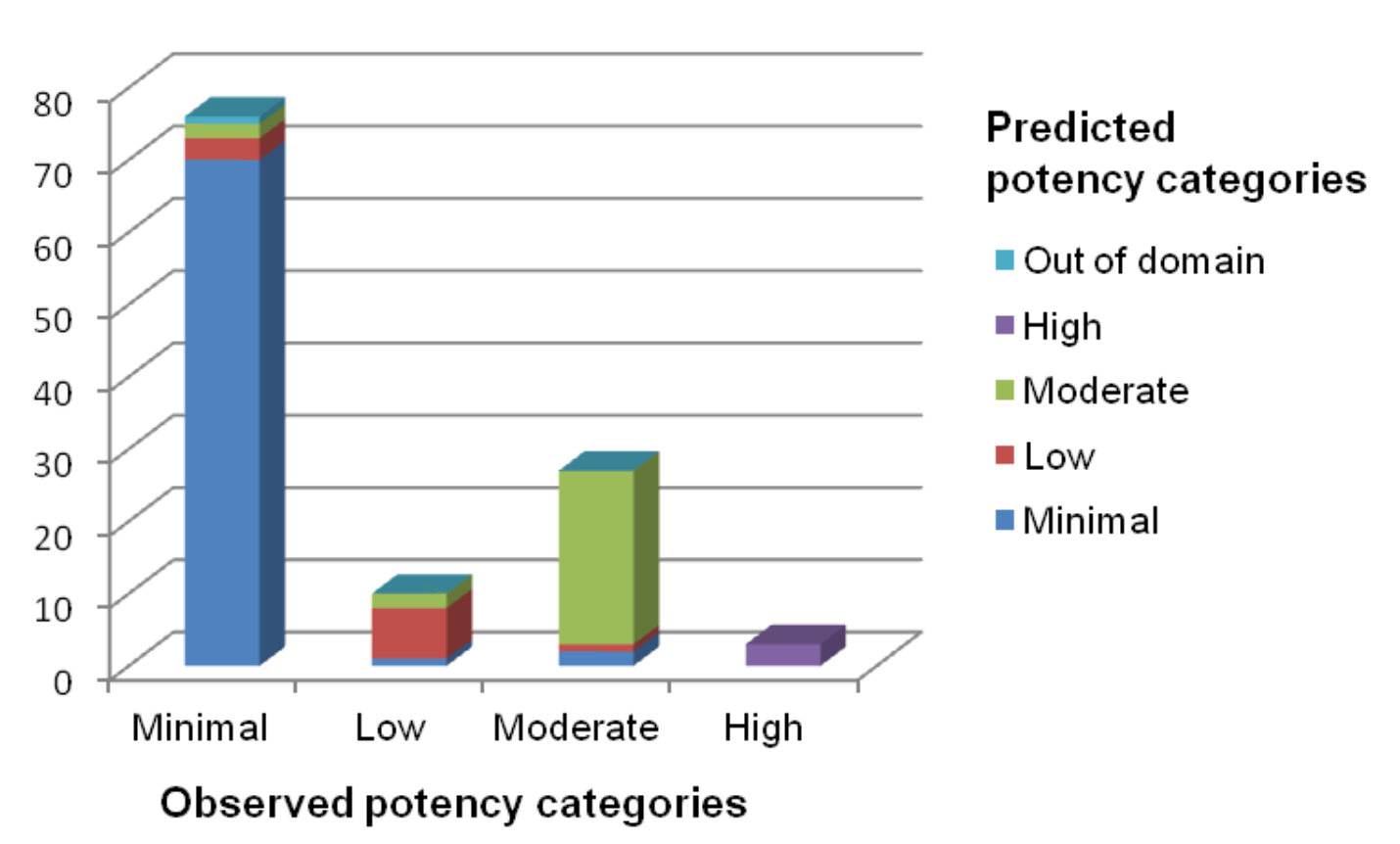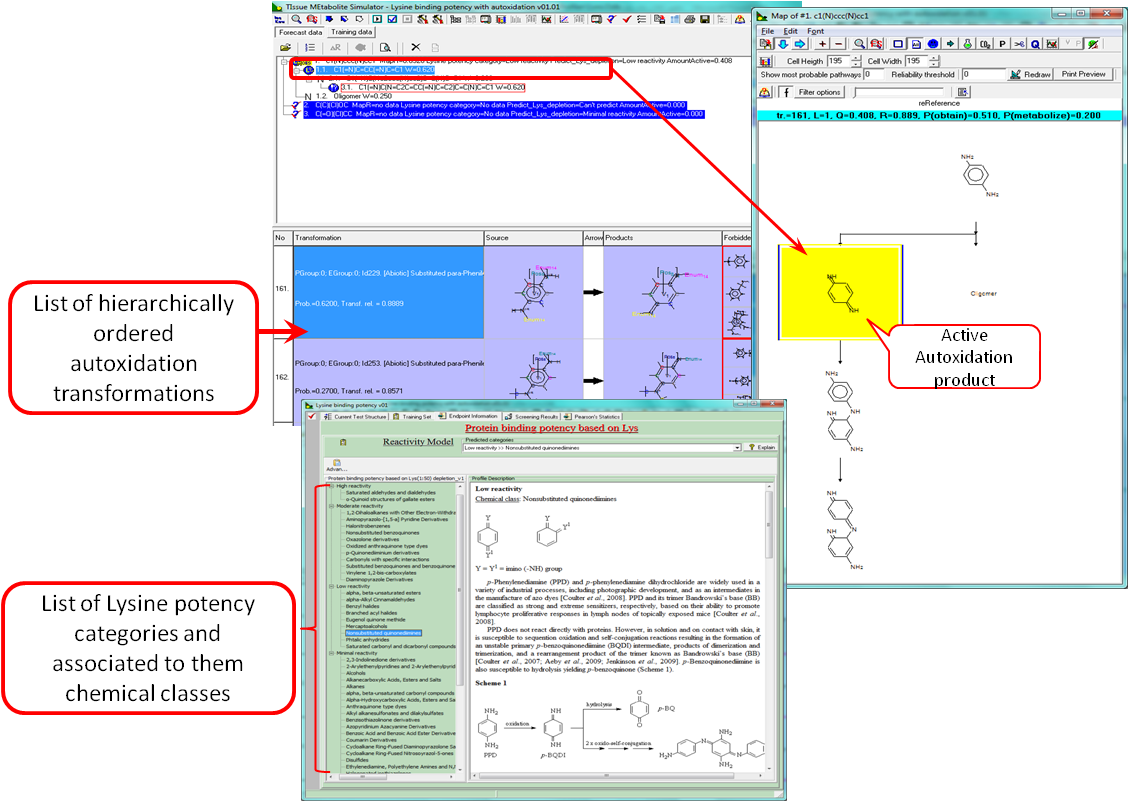Lysine potency
Endpoint
The model predicts potency of chemicals to interact with Lysine peptide. The potency of chemicals is based on experimentally measured peptide depletion values.
Data
The training set of the model consists of 114 proprietary chemicals with experimental DPRA Lysine depletion values. The data were provided by L'OREAL.
Model
The Lysine potency model was developed on the base of data from the in chemico Direct Peptide Reactivity Assay (DPRA) [1]. The DPRA Lysine depletion data were divided according to a potency scale into four potency categories (high, moderate, low and non reactive). The potency model consists of structural boundaries associated with theoretical mechanisms of interactions with the synthetic peptides supported by literature and experimental data.
The hypothesis used to build the model assumes that under the test conditions of the DPRA autoxidation transformations of the test chemicals are feasible. In this respect, the Lysine potency models was combined with a simulator of autoxidation transformations at pH of DPRA Lysine test medium (i.e., pH = 10.2).
Domain
The domain was determined by splitting training chemicals into correctly and incorrectly predicted chemicals. The applicability domain consists of three layers [2]:
- General parametric requirements - includes ranges of variation of log KOW and MW,
- Structural domain - based on atom-centered fragments (ACFs),
- Alert performance - the threshold for reliability of an alert is 60% sensitivity
Statistic
The reproducibility of the experimental results is expressed by an adjusted Pearson's contingency coefficient (C*). The performance of the Lysine potency model which accounts for the autoxidation transformations in neutral medium is C*= 0.81. Details on the predictability of the model for different reactivity potency ranges are illustrated on Figure 1.

Figure 1. Statistics of Lysine potency model applied on the model training set with accounting for autoxidation.
Reporting
The predictions of Lysine potency model for a parent chemical and its possible autoxidation products could be reported in tab delimited file including the following information for the chemicals: chemical identity (CAS number, Name, SMILES), observed data, predicted Lysine potency, applicability domain.
References
1. G. F. Gerberick, J. D. Vassallo, R. E. Bailey, J. G. Chaney, S. W. Morrall, J-P. Lepoittevin, Toxicol. Sc., (2004), 81, pp. 332-343.
S Dimitrov, G Dimitrova, T Pavlov, N Dimitrova, G Patlevisz, J Niemela and O Mekenyan, J Chem Inf Model, 45, 2005, 839-849.

